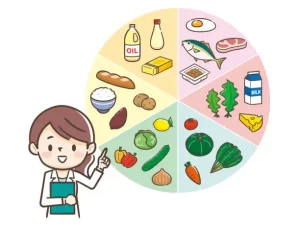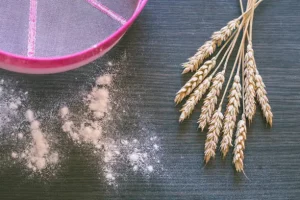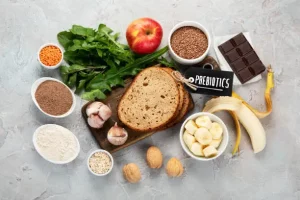How To Avoid Gluten Cross Contamination?
Living gluten-free is more than just a lifestyle choice for many people. For those with celiac disease, it’s essential in order to avoid significant and sometimes dire health consequences. Since gluten proteins can easily be transferred from one source to another through cross-contamination, it’s important to understand what cross-contamination is, how it happens, and ways to prevent it. Let’s find out How To Avoid Gluten Cross Contamination?
What Is Cross-Contamination?
Cross-contamination occurs when small particles of gluten from one food item are transferred onto another. Gluten can be transferred through touching or contact with the same surface, utensils, cutting boards, pots, and pans, etc. As a result of this transfer, even if only trace amounts remain on food that’s labeled as “gluten-free” contamination has occurred.
Importance of Cross-Contamination in Celiac Disease
For those with celiac disease or other conditions related to gluten sensitivity, even trace amounts of gluten can cause serious health issues. Symptoms of gluten ingestion can manifest as intestinal discomfort, nutrient malabsorption, and even severe inflammation in the body. Cross-contamination is especially concerning when it comes to food that is labeled “gluten-free” since those with celiac disease rely on this labeling to make informed decisions about what they eat.
Tips for Avoiding Gluten Contamination
The best way to avoid cross-contamination is through education and diligence. Here are some tips for avoiding gluten contamination:
- Avoid touching raw gluten-containing foods with any utensils or surfaces used for preparing gluten-free foods
- Clean all surfaces, pots, pans and utensils thoroughly before using them for preparing a gluten-free meal
- Store gluten-containing and gluten-free foods in separate areas of the kitchen
- Wash your hands thoroughly after touching any kind of food with gluten.
Cross Contamination Examples
Examples of cross-contamination include using the same cutting board for both gluten-containing and gluten-free foods without cleaning it first, using the same utensils for preparing a sandwich on wheat bread and one made with gluten-free ingredients or sharing butter that’s used to spread on wheat toast with someone who has celiac disease.
Ways to Prevent Cross Contamination
The best way to prevent cross-contamination is through careful meal preparation. Take time to clean all surfaces, pots, pans and utensils thoroughly before using them for preparing a gluten-free meal. Store gluten-containing and gluten-free foods in separate areas of the kitchen, and always wash your hands thoroughly after touching any kind of food with gluten.
Ways to Clean Cross Contamination
In order to clean cross-contamination off surfaces or utensils, it’s best to start by using hot soapy water and a non-abrasive scrub pad. If that doesn’t work, try mixing two teaspoons of bleach with one gallon of warm water and soak the contaminated item for five minutes before rinsing it off.
How To Clean Gluten Off Surfaces
The best way to clean gluten off surfaces is to use hot soapy water and a non-abrasive scrub-pad. It’s also important to make sure that the surface is completely dry before coming in contact with gluten-free ingredients. If soap and water don’t work, a mixture of two teaspoons of bleach and one gallon of warm water should be used to soak the contaminated item for five minutes before rinsing it off.
Dedicated Gluten-Free Zones in Your Kitchen
Creating dedicated gluten-free zones in your kitchen can greatly reduce the risk of cross-contamination. Designate specific areas for preparing and storing gluten-free foods, and ensure these zones have separate utensils, cutting boards, and appliances. Clearly label these items to prevent accidental use with gluten-containing foods. Regularly clean and sanitize these dedicated spaces to maintain a safe environment for gluten-free meal preparation. By organizing your kitchen with these zones, you can provide an extra layer of protection against cross-contamination and ensure the safety of those with celiac disease or gluten sensitivities.
Symptoms of Cross Contamination
The symptoms associated with cross-contamination vary depending on the individual and their sensitivity to gluten. Common signs include abdominal pain, bloating, fatigue, headaches, skin rash or hives, joint pain, and depression. In some cases, ingestion of trace amounts may cause an autoimmune reaction leading to serious health complications.
Conclusion
Cross-contamination can be a serious issue for those with celiac disease or other forms of gluten sensitivity. It’s important to take steps to prevent cross-contamination by cleaning all surfaces, pots, and pans thoroughly before using them for preparing a gluten-free meal.
It’s also important to understand the symptoms of cross-contamination in order to identify it quickly and take steps to treat it appropriately. How To Avoid Gluten Cross Contamination? With careful education and diligence, it is possible for those with gluten sensitivities to enjoy their meals without worrying about dangerous levels of cross-contamination.







![Gluten-Free Christmas Tree Cakes [delightful holiday treat]](https://glutenfreedream.com/wp-content/uploads/2023/05/Gluten-Free-Christmas-Tree-Cakes-1-768x513.webp)


